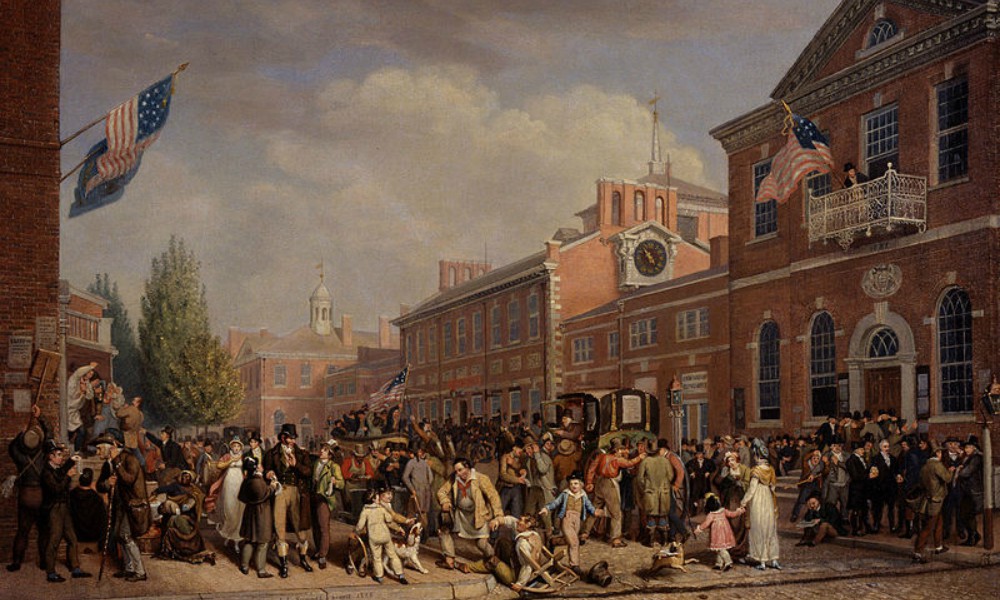This year’s second seder falls on April 9, the date of the surrender at Appomattox which effectively ended the U.S. Civil War. In that year, 1865, the first seder fell on April 10, and—as Jonathan Sarna and Benjamin Shapell highlight in their gripping tome, Lincoln and the Jews: A History—the close conjunction of the end of the war with the beginning of the holiday commemorating the Exodus caught the eye of rabbis and journalists alike. By 1865, it seemed self-evident that American emancipation resonated with biblical emancipation in powerful ways. But it had not always been so: This new resonance of meaning captured the hearts of American Jews only during the vicissitudes of the Civil War.
Before the Civil War, most American Jews did not oppose slavery. There were exceptions—activists like the feminist and atheist Ernestine Rose, and idealistic young people like the law student Abram Dittenhoefer, whose father worried that he would ruin his career by joining the Republican Party—but most Jews voted Democrat, and Democrats were tolerant of slavery. The anti-slavery parties were tarred with nativism, which was distasteful and threatening to a Jewish community composed largely of immigrants and first-generation Americans. And many, including such luminaries as the Reform rabbi Isaac Mayer Wise and the Orthodox rabbi Morris Raphall, considered acceptance of American slavery consonant with the Bible, which documents slavery and sets parameters for its practice within the Israelite community.
Some of us denizens of the 21st century might protest that although the Bible acknowledges slavery, its narrative and its legal innovations clearly critique the practice. Even in 1861, some Jewish leaders attempted to stake out a middle ground. Raphall castigated abolitionists for self-righteousness and advised them to be “content with following the word of God” even as he admonished American slaveholders to bring their slave codes up to the standard of Biblical law in recognizing the humanity of the enslaved. Wise, in an 1864 article on the “Mosaic Code,” struck a similar note, arguing that if American slavery more closely resembled Biblical slavery, it might exercise a benevolent, uplifting influence on the people subject to it. But though American rabbis used Biblical law to critique American slavery, only slowly did they broach a connection between Biblical emancipation and the prospect of emancipation in the United States.
During the war years, military service and other types of wartime mobilization drew American Jews into the heart of American society and its moral problems. As Howard B. Rock argues in Haven of Liberty: New York Jews in the New World, 1654-1865, the Civil War was a transformative moment in American Jews’ sense of integration into American society. The Civil War years brought one of the ugliest anti-Semitic incidents in American history, General Ulysses Grant’s order to expel the Jews from areas of Mississippi, Tennessee and Kentucky under his occupation. But they also brought startling new measures of acceptance, including the induction of the first four Jewish military chaplains in American history: two hospital chaplains, and two regimental chaplains elected to serve mixed Jewish and Christian units, where they were valued for their sensitivity to immigrant soldiers’ needs and their ability to preach in German. Perhaps a sense of being more fully incorporated into American society paved the way for American Jews to recognize the connection embodied in the African-American spiritual “Go Down, Moses”—a song that was published and popularized during the war, after being used as a rallying cry by black soldiers.
By 1865, American Jewish leaders had done an about-face. Rabbi Max Lilienthal of Cincinnati asked some piercing questions in a sermon he preached that year on Shabbat Pesach: “We have in four years advanced intellectually, morally and politically more than other nations will in centuries to come. Four years ago, how many of us were Abolitionists? How many of us dreamt of the possibility that this sacred soil of liberty should be cleansed from the scourge of slavery? How many of us had moral courage enough to think that this great stain could be or should be removed from the brilliant escutcheon of the American people?” Lilienthal toasted the intellectual and moral growth of his community and of the whole American people—including President Abraham Lincoln, who had not argued for the outright abolition of slavery at the beginning of the Civil War, and whom Lilienthal had nonetheless deemed excessively radical in 1861. But a world had turned, and there the country was in 1865, dizzy with moral transformation—though with the great and unfinished work of Reconstruction yet to come.














